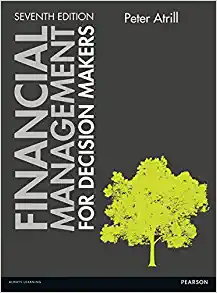Question
Can someone answer these questions ASAP in excel format. Thanks 9-11 (Divisional costs of capital) LPT Inc. is an integrated oil company headquartered in Dallas,
Can someone answer these questions ASAP in excel format. Thanks
9-11
(Divisional costs of capital) LPT Inc. is an integrated oil company headquartered in Dallas, Texas. The company has three operating divisions: oil exploration and production (commonly referred to as E&P), pipelines and refining. Historically LPT did not spend a great deal of time thinking about the opportunity cost of capital for each of its divisions and used a company wide weighted average cost of capital of 14% for all new capital investment projects. Recent changes in its businesses have made it abundantly clear to LTPs management that this is not a reasonable approach. For example, investors demand a much higher expected rate of return for exploration and production ventures than for pipeline investments. Although LPTs management agrees, in principle at least, that different operating divisions should face an opportunity cost of capital that reflects their individual risk characteristics, they are not in agreement about whether a move toward divisional costs of capital is a good idea based on practical considerations.
A. Pete Jennings is the chief operating officer for the E&P division and he is concerned that going to a system of divisional cost of capital may restrain his ability to undertake very promising exploration opportunities. He argues that the firm really should be concerned about finding those opportunities that offer the highest possible rate of return on invested capital. Pete contends that using the firms scarce capital to take on the most promising projects would lead to the greatest increase in shareholder value. Do you agree with Pete? Why or why not?
B. This pipeline division manager, Donna Selma, has long argued that charging her division the company wide cost of capital of 14% severely penalizes her opportunities to increase shareholder value. Do you agree with Donna? Explain.
9-2
(Cost equity) Salte Corporation is issuing new common stock at a market price $27. Dividends last year were $1.45 and are expected to grow at an annual rate of 6% forever. Flotation costs will be 6% of market price. What is Salte's cost of equity?
9-9
(cost of debt) Sincere Stationary Corporation needs to raise $500,000 to improve its manufacturing plant. It has decided to issue a $1,000 par value bond with a 14% annual coupon rate and a 10 year maturity. The investors require a 9% rate of return.
A. Compute the market value of the bonds.
B. What will the net price be if flotation costs are 10.5% of the market price?
C. What is the firms after tax cost of debt if its average tax rate is 25% and its marginal tax rate is 34%?
Step by Step Solution
There are 3 Steps involved in it
Step: 1

Get Instant Access to Expert-Tailored Solutions
See step-by-step solutions with expert insights and AI powered tools for academic success
Step: 2

Step: 3

Ace Your Homework with AI
Get the answers you need in no time with our AI-driven, step-by-step assistance
Get Started


